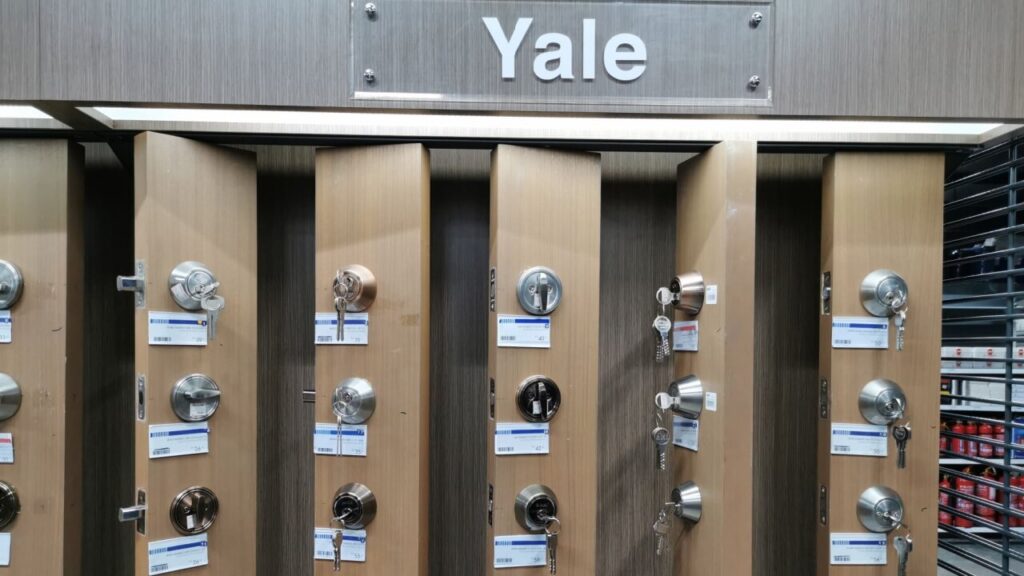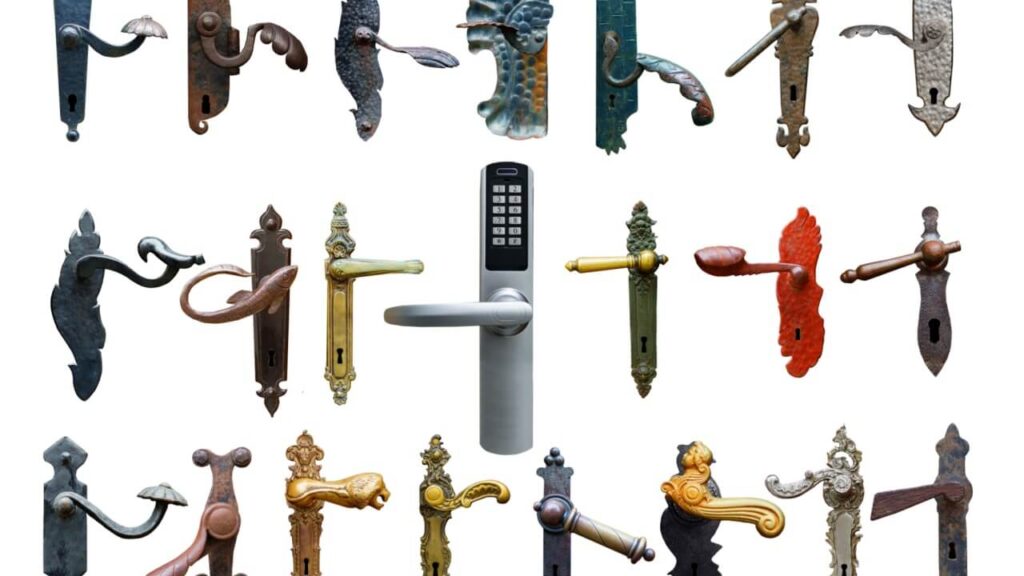The Evolution of Locks
Imagine stepping back in time, where the locks and keys we take for granted today were once revolutionary inventions. In the heart of the Indianapolis metropolitan area, a tale of security, craftsmanship, and innovation unfolds, tracing the evolution of locks. This journey isn’t just about mechanisms and metal; it’s about the people, the buildings, and the community it protected. Join us as we unlock history, exploring how the evolution of locks in Indianapolis mirrors the city’s growth and the locksmith’s role in shaping security through the ages.
The Early Days: From Warded Locks to the Industrial Revolution

The story begins in the 19th century when Indianapolis was establishing itself as a bustling city. The earliest locks were simple yet effective warded locks, which used obstructions to prevent unauthorized keys from turning. These locks secured homes, businesses, and community treasures, reflecting a time when locksmithing was as much an art as it was a craft.
As the city grew, so did the need for better security. The Industrial Revolution brought about significant advancements. The introduction of more sophisticated lock mechanisms, such as the lever tumbler lock, offered enhanced protection against increasingly skilled lockpickers. This period marked the first wave of modern locksmithing in Indianapolis, where local craftsmen honed their skills and contributed to the national movement towards better security solutions.
The 20th Century: A Time of Innovation and Expansion
The 20th century was a period of remarkable innovation in the locksmith industry. In Indianapolis, the advent of the pin tumbler lock, invented by Linus Yale Jr., revolutionized the concept of security. This design became the standard for most locks and is still widely used today. The city’s locksmiths quickly adopted and mastered these new technologies, ensuring that Indianapolis remained at the forefront of security advancements.

This era also saw the expansion of the locksmith’s role beyond just locks and keys. The profession began to encompass a broader range of security solutions, including safes, vaults, and later, electronic security systems. Indianapolis locksmiths were not just craftsmen; they were security experts, consultants, and an integral part of the community’s safety network.
The Digital Age: Locksmiths in the Era of Smart Security
As we moved into the 21st century, the locksmith industry faced its most significant transformation yet—the digital revolution. Indianapolis was no exception. The introduction of smart locks, keyless entry systems, and advanced biometric systems represented a seismic shift in how we think about security.
Indianapolis locksmiths embraced these changes, combining traditional skills with new technologies. Today, they are not only experts in mechanical locks but also in electronic and digital security systems. This blend of old and new reflects the city’s spirit of innovation and adaptability, ensuring that its residents and businesses remain secure in an ever-changing world.
Conclusion: The Locksmith’s Legacy
The evolution of locks in the Indianapolis metropolitan area is a testament to the locksmith’s enduring importance. From the simplest warded locks of the 19th century to today’s advanced digital security systems, locksmiths have played a pivotal role in the city’s history. They are not just technicians but guardians of our homes, businesses, and communities.

As we look to the future, the locksmith industry in Indianapolis will continue to evolve. However, one thing remains constant: the locksmith’s commitment to security, innovation, and the community. In unlocking the history of locks, we also unlock the story of Indianapolis—a story of growth, resilience, and the relentless pursuit of safety.
References
Historical Societies and Local Archives: The Indiana Historical Society and other local historical archives in the Indianapolis area would be excellent sources for information on the early history of locks and locksmithing in the region. They might have records, old advertisements, business directories, and articles related to the evolution of locksmithing practices over time.
Patent Databases: For information on the introduction and adoption of specific lock mechanisms, like the lever tumbler lock or the pin tumbler lock invented by Linus Yale Jr., searching through historical patents could provide insights into the technological advancements and the timeline of these innovations. The United States Patent and Trademark Office (USPTO) database would be a valuable resource.
Technical and Trade Publications: Journals and magazines that cater to the locksmithing and security industries, such as “The National Locksmith” or “Locksmith Ledger,” often publish articles on the history of the trade, significant technological advancements, and profiles of notable figures in the industry. These publications might have archives accessible online or through industry associations.
Books on Locksmithing History: Several books have been written on the history of locks and locksmithing, detailing the technological advancements and cultural significance of locks through the ages. Titles such as “The Lure of the Lock” by Eric Hodgson and “Locks, Safes, and Security: An International Police Reference” by Marc Weber Tobias could provide detailed background information and context.
Museum Collections: Museums with collections focused on technology or industrial history, such as the Indiana State Museum, might have exhibits or archives related to locks and security devices. These can offer both visual and descriptive insights into the evolution of lock mechanisms and their impact on society.
Local Locksmiths and Industry Experts: Interviews with practicing locksmiths in the Indianapolis area, especially those with long-standing businesses or a focus on historical preservation, could provide anecdotal evidence and personal insights into the evolution of the profession and its technologies.
Library and Academic Databases: Accessing academic journals and books through library databases can provide scholarly articles and research studies on the history of security technologies, including locks. These sources are particularly useful for fact-checking technical information and understanding the broader social and economic factors influencing the locksmithing profession.
